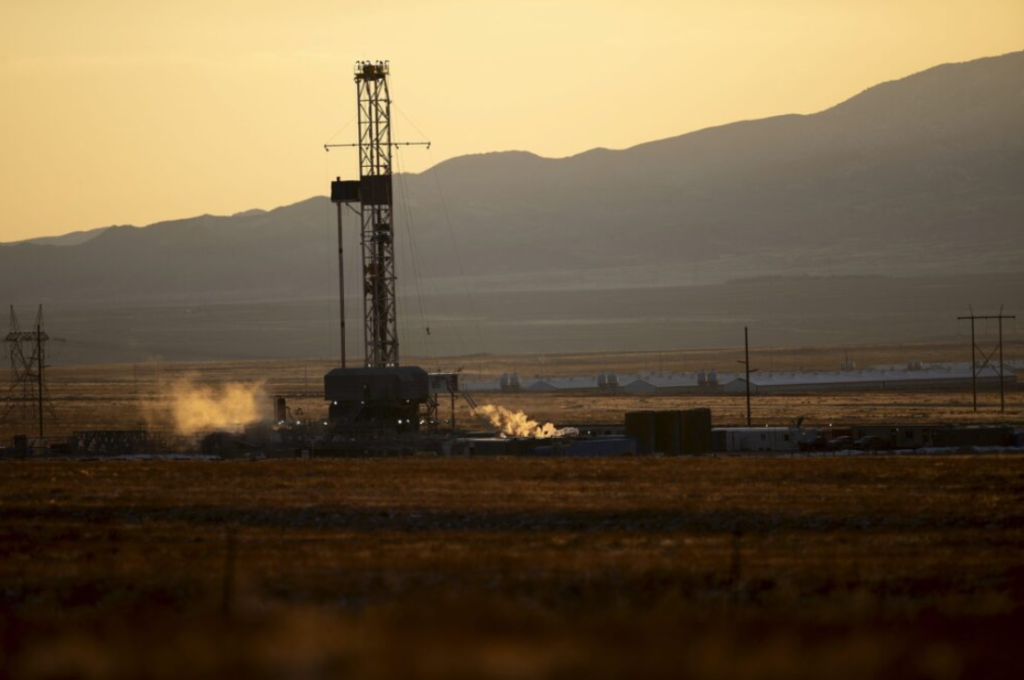Written By: Jennifer McDermott Associated Press
View the original article here

As promised, President Donald Trump began reversing the country’s energy policies his first day in office with a spate of orders largely favoring oil, gas and coal. But there is one renewable energy that did find favor: geothermal.
Energy experts say that makes sense — geothermal energy makes electricity 24/7. Many people working in the field came from the oil and gas industry and they use much of the same technology for drilling wells. Trump strongly supports and gets support from the oil and gas industry. And there’s bipartisan support in Congress for geothermal.
“The embrace of advanced geothermal under this new administration, I’d say is not a giant surprise,” said Alex Kania, a managing director at Marathon Capital. “It’s reliable, it’s efficient, and frankly their ties to the more conventional forms of energy production, I think, is probably not lost on some people.”
Geothermal creates electricity cleanly by making steam from the Earth’s natural heat and using that steam to spin a turbine. It’s a climate solution because it reduces the need for traditional power plants that burn fossil fuels and cause climate change.
Trump declared an energy emergency on Monday, and included geothermal heat as one of the domestic energy resources that could help ensure a reliable, diversified and affordable supply of energy. Solar, wind and battery storage were omitted, and wind was singled out in a separate order with measures intended to slow it down.
“Geothermal is heating up and the Trump administration is going to empower the industry over the next four years to achieve its potential,” said Bryant Jones, executive director of the geothermal trade association, Geothermal Rising.
It’s a vibrant business right now.
New geothermal companies are adapting technology and practices from oil and gas to create steam from ubiquitous hot rock. That would make this kind of electricity possible in many more places. The Energy Department estimates the next generation of geothermal projects could provide some 90 gigawatts in the U.S. by 2050 — enough to power 65 million homes or more. Former Energy Secretary Jennifer Granholm supported geothermal as a climate solution.
Trump’s pick for energy secretary, Chris Wright, is a fossil fuel executive who values geothermal, too. His company, Denver-based Liberty Energy, invested in Fervo Energy, a Houston-based geothermal company. Wright said at his confirmation hearing that he’s excited about geothermal as an “an enormous, abundant energy resource below everyone’s feet.”
Wright’s appointment is a clear signal that this administration will support geothermal, said Terra Rogers, a program director who focuses on the technology at the nonprofit Clean Air Task Force.
“He’s well-informed of its risks and opportunities, and continues to be a strong advocate for what it could be,” Rogers said.
The United States is a world leader in electricity made from geothermal energy, but it still accounts for less than half a percent of the nation’s total large-scale generation, according to the U.S. Energy Information Administration. The big states are California, Nevada, Utah, Hawaii, Oregon, Idaho and New Mexico, where reservoirs of steam, or very hot water, lie close to the surface.
In its first actions this week, the new administration also indicated support for nuclear power and removing obstacles to mining uranium, which can be refined into nuclear fuel. Like geothermal, nuclear power does not cause climate change. The executive order also backs hydropower.
Solar is the fastest-growing source of electricity generation in the United States.
Trump wants to increase production of oil and gas in order for the U.S. to have the lowest-cost energy and electricity of any nation in the world, he says. He took aim at wind energy, temporarily halting offshore wind lease sales in federal waters and pausing federal approvals, permits and loans for projects both onshore and offshore.
Trump says wind turbines are horrible, only work with subsidies and are “many, many times” more expensive than natural gas. Offshore wind is one of the most expensive sources of new power generation, but onshore wind is cheaper than new natural gas plants, according to estimates from the Energy Information Administration.
Jones, at Geothermal Rising, said the industry hopes the support for geothermal energy will lead to streamlined permitting, more federal research and tax credits to promote innovation.
Sage Geosystems in Houston is a geothermal company launched by former executives at oil and gas giant Shell. CEO Cindy Taff said it’s exciting to see more momentum building for geothermal. She hopes it will spur investment in large projects, including those that meet surging demand for electricity from data centers and artificial intelligence, and projects to make military facilities energy resilient.
If geothermal projects could multiply fast across the country, she said, it would bring the cost down, and that would be good for everyone.
“This could be the decade of geothermal,” Taff said.

